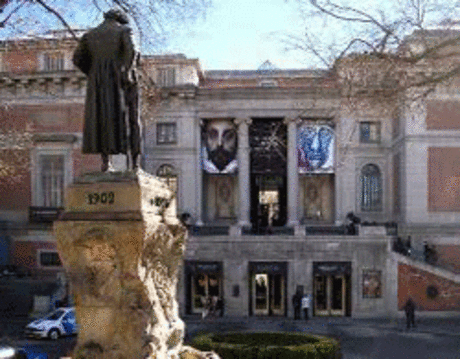Goya Museum
The Goya Museum houses the remains of renowned Spanish artist Francisco de Goya. Goya was commissioned to decorate the once chapel and completed a series of mesmerizing frescoes in just 120 days. The chapel eventually became a museum in 1928 and featured works from the artist dating from the 18th Century. The museum has been declared a national monument since 1905.
The remains of renowned Spanish artist Francisco de Goya are located in a tomb within a hermitage dedicated to Saint Anthony of Padua, called "La Ermita de San Antonio de la Florida". Goya died in exile in Bordeaux in 1828, and his mortal remains were finally put to rest in this small chapel.
The chapel was built in the general location of two prior chapels built in the 1730s, which were on the land of a farm called La Florida. The present structure was built by Felipe Fontana from 1792 to 1798 on the orders of King Carlos IV, who also commissioned the frescoes by Goya and his assistant Asensio Juliá.
The structure was declared a national monument in 1905. In 1919 Goya's remains were transferred here from Bordeaux, where he had died in 1828. In 1928 an identical chapel was built alongside the original, in order to allow the original to be converted into a museum. On every June 13, the chapel becomes the site of a lively pilgrimage in which young unwed women come to pray to Saint Anthony and to ask for a partner.
The frescoes by Goya were completed over a six month period in 1798. The frescoes portray miracles by Saint Anthony of Padua. On the main cupola of the chapel Goya depicted Saint Anthony raising a dead man; instead of portraying the scene as occurring in thirteenth-century Lisbon, Goya relocated the miracle to contemporary Madrid.
The principal scene is composed of witnesses of the miracle, who form a ring around the base of the cupola, standing on a balcony and dressed like common people of the street. The religious scene is thus converted into something as everyday as the faithful who attended mass there. The central point of the painting is the resurrected man and St. Anthony. All the activity takes place against a wide background made up of blue skies, clouds and trees. Children playing, women talking to each other and people gesticulating mingle together in an air of awe and devotion.
The painting is a fresco on distemper and the colors used by Goya are known from a bill from the merchant who sold him the paints. The colors used include pale ochre, dark ochre, burnt sienna, English blue, etc.
The spatial conception is inherited from Tiepolo. The free, long and vigorous brushwork is used to create atmosphere. Thus an effect of modernity is achieved that would be taken as a starting point for Goyaesque impressionism.
Due to possible confusion, his body was transported together with that of his son's father-in-law and Goya's close friend Martín Miguel de Goicoechea, and both tombs continue in this location. One curious though morbid fact is that Goya's head is missing, thought stolen sometime in the last century for phrenological studies.
Goya had been commissioned to decorate the chapel, completing magnificent frescoes in just 120 days, and today this is a museum-pantheon that stands in memory of both the painter and the saint.
A cult statue of Saint Anthony is to be found inside, while a replica of the chapel located on the opposite side is used for services and as the focus of a popular pilgrimage every June on the day celebrating the life of the saint.
In the cupola of the old chapel Goya depicted Saint Anthony raising a murdered man to life, exonerating the man's father who had been wrongly accused of the crime. Swirling around him are "angelitas" or little angels who are the "majas" who appear in his paintings of local festivals.
Although these works date from the 18th century, Goya's remains were only brought to this site in 1919. Close to a decade later in 1928 it was given the status of a museum, although it is only since 1993 that it's been fully open to the public. It has been declared a national monument since 1905 and is run with the help of the Real Academia de Bellas Artes de San Fernando.
Opening hours: Tuesday to Friday, 9:30am to 8pm (2:30pm in August). Weekends, 10am to 2pm. Closed Mondays and public holidays. You can get there via flight to Madrid.




